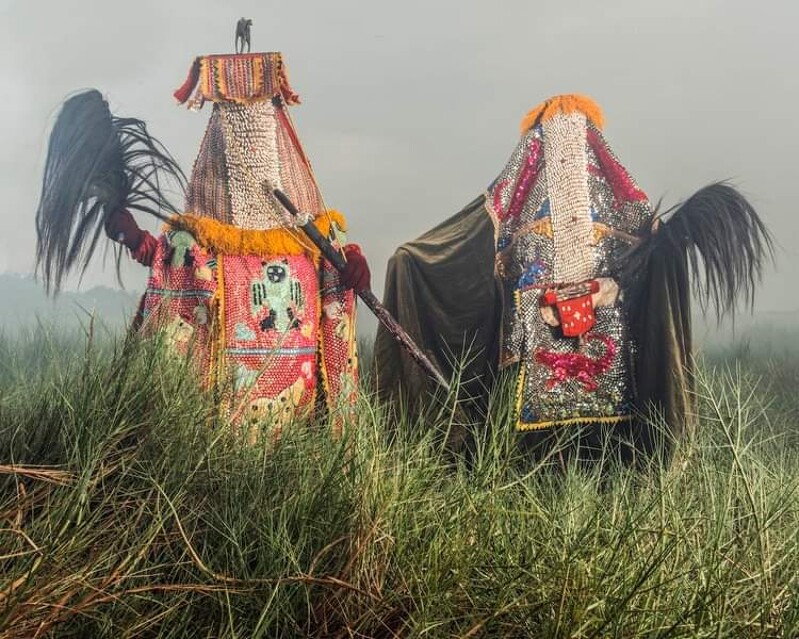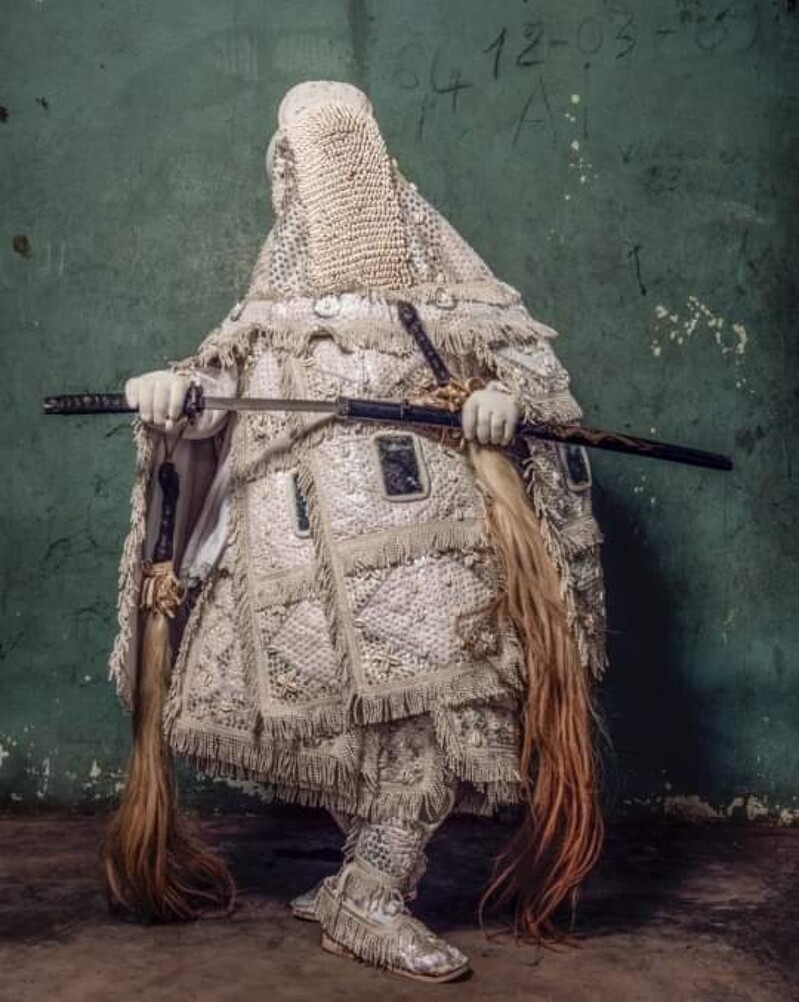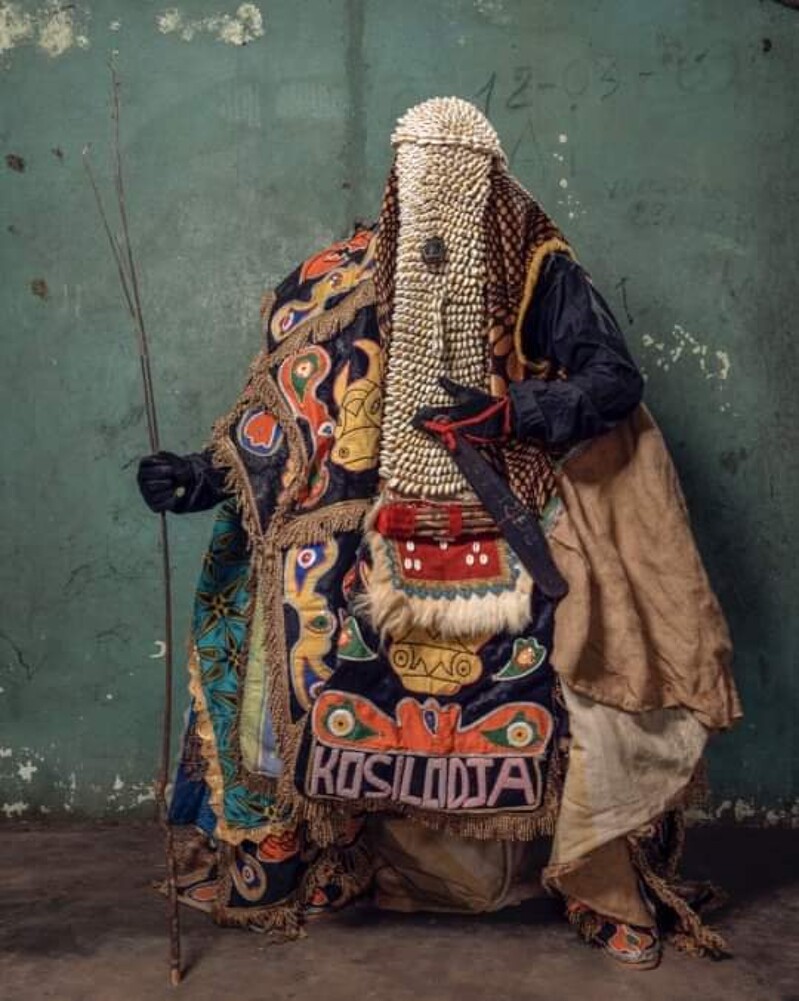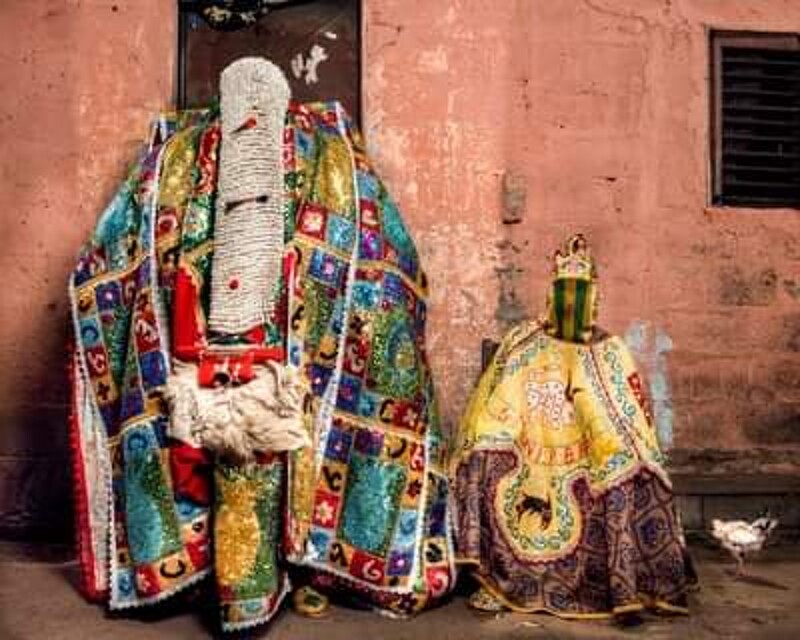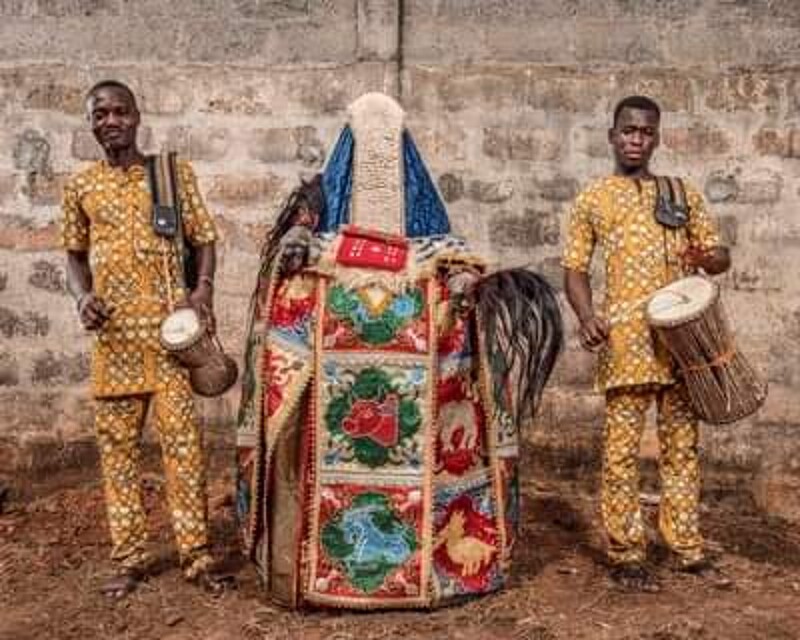Youruba EGUNGUN
© Stephan Gladieu
“The cult of ancestors.
For the Yoruba, the dead reveal themselves to their descendants via an
intermediary know as Egun. The spirit of the dead returns to earth in a
striking loin- cloth of embroidered material decorated with shells,
spangles, bone, and magic wood.
The family clans, exclusively male, summon Egun from the realm of the dead
and take care of his needs on earth. Egun is the intermediary between this
world and the souls beyond. He appears to certain families days after a
death or during ceremonies to commemorate the deceased. He may also come to
bestow the blessing of the ancestors on the marriages of their descendants
or sometimes to welcome a newborn. His appearance is always accompanied by
offerings of food, drink, and money. Egun speaks in a deep, hoarse voice
and eagerly dances to the Bata or Ogbon drums. Contact with Egun’s
loin-cloth can be fatal to the living, and the Mariwas, or guardians of the
Egun society, armed with formidable engraved wooden canes (Ishan) take care
to keep the foolhardy away. These canes symbolize the border between the
world of the living and the realm of the dead (Ku-tome). The wind rustling
through his loincloth as Egun whirls in dance is, however, beneficial.
Each family clan in the cult of ancestors has access to a sacred space
where the masks of the ghosts are kept. Their adepts are educated in secret
and don their ceremonial masks. For this task, the clan appoints certain
members to be initiated and take on the responsibility of lending their
bodies to the ancestral spirits, thus assuring dialogue with ancestors who
have become protective deities. One or more members of the family are
chosen, sometimes at a young age, to be messengers from the beyond. They
follow secret training with fellow initiates that may last years, even
decades. They learn the trance states that summon the gods to possess them,
and the language of the invisible, they become their concrete form. They
emerge as Egungun initiates. Only initiates know who the Egungun is, since
during trances he appears masked, his body wholly disguised by the
ceremonial garb.
This space or monastery is reserved for the initiated, exclusively man,
under the pain of death. The monastery is directed by the Bale, typically
the head of the family. The Alagba, or supreme leader, is the king of the
village’s Egungun and keeps the monastery in order.” Read more
